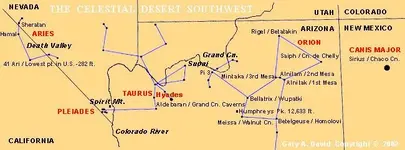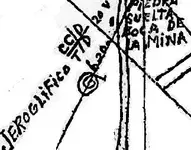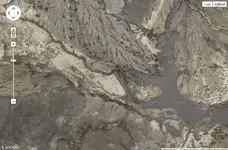gollum
Gold Member
- Joined
- Jan 2, 2006
- Messages
- 6,770
- Reaction score
- 7,734
- Golden Thread
- 0
- Location
- Arizona Vagrant
- Detector(s) used
- Minelab SD2200D (Modded)/ Whites GMT 24k / Fisher FX-3 / Fisher Gold Bug II / Fisher Gemini / Schiebel MIMID / Falcon MD-20
- Primary Interest:
- All Treasure Hunting
- #2,461
Thread Owner
Spring,
I would think that since the Jesuits were the ones teaching the mining arts in many of their Colegios in Europe, that they would have known the most modern and best methods of refinement in their time. So, if the gold were refined in Columbia to 20-22 karats, then it only stands to reason that the Jesuits (mostly the German Jesuits) had the knowledge to refine gold to the same fineness no matter where they were. Basically, NO GOLD from the New World has been found (to my knowledge) that is in excess of 22 karats in purity. I may be wrong though.
You also can't just out of hand dismiss the 1028 silver bars found only a few miles from the location of the found gold bars. Both caches shared the Jesuit Cross and "V". Do you REALLY think it was a coincidence that an enormous cache of ONLY silver bars were found so close to a large cache of ONLY gold bars? In all of the New World, two large caches of precious metal bars with Jesuit Attributions would be ACCIDENTALLY buried so close together? Not likely! And since the silver bars bore the name of Father Javier Saeta, the date of his death (1695), ALONG WITH the Jesuit Cross and "V", there is no doubt that the markings bound both caches to the Jesuit Order. This also places the probable date of their burial to sometime not long after 1695.
As far as what is POSSIBLE, to be intellectually honest, I must admit the possibility you state. There are also many other possibilities. There are many people who claim the idea of Jesuit Wealth is BS, and therefore NEITHER of the caches COULD be of Jesuit Origin. Since I believe that some of us have made a very conclusive (although mostly circumstantial) case for the Jesuit Order being both Miners and very wealthy, I absolutely believe that both caches were MOST LIKELY buried by Jesuits or Jesuit Connected Coadjutors, that also had been stationed in the Yucatan.
It is also possible (though not probable) that aliens wanted to disguise evidence of their mining. Since aliens are of the Devil, they wanted to implicate their greatest rivals for the souls of mankind......................The Jesuits! So, they make bars with secret Jesuit Symbolism (since they could see into the Jesuits' Secret Book by the use of the Hyperbolic Interdimensional Communications Devices ...... and telepathy), they knew it all! ;-)
Mike
I would think that since the Jesuits were the ones teaching the mining arts in many of their Colegios in Europe, that they would have known the most modern and best methods of refinement in their time. So, if the gold were refined in Columbia to 20-22 karats, then it only stands to reason that the Jesuits (mostly the German Jesuits) had the knowledge to refine gold to the same fineness no matter where they were. Basically, NO GOLD from the New World has been found (to my knowledge) that is in excess of 22 karats in purity. I may be wrong though.
You also can't just out of hand dismiss the 1028 silver bars found only a few miles from the location of the found gold bars. Both caches shared the Jesuit Cross and "V". Do you REALLY think it was a coincidence that an enormous cache of ONLY silver bars were found so close to a large cache of ONLY gold bars? In all of the New World, two large caches of precious metal bars with Jesuit Attributions would be ACCIDENTALLY buried so close together? Not likely! And since the silver bars bore the name of Father Javier Saeta, the date of his death (1695), ALONG WITH the Jesuit Cross and "V", there is no doubt that the markings bound both caches to the Jesuit Order. This also places the probable date of their burial to sometime not long after 1695.
As far as what is POSSIBLE, to be intellectually honest, I must admit the possibility you state. There are also many other possibilities. There are many people who claim the idea of Jesuit Wealth is BS, and therefore NEITHER of the caches COULD be of Jesuit Origin. Since I believe that some of us have made a very conclusive (although mostly circumstantial) case for the Jesuit Order being both Miners and very wealthy, I absolutely believe that both caches were MOST LIKELY buried by Jesuits or Jesuit Connected Coadjutors, that also had been stationed in the Yucatan.
It is also possible (though not probable) that aliens wanted to disguise evidence of their mining. Since aliens are of the Devil, they wanted to implicate their greatest rivals for the souls of mankind......................The Jesuits! So, they make bars with secret Jesuit Symbolism (since they could see into the Jesuits' Secret Book by the use of the Hyperbolic Interdimensional Communications Devices ...... and telepathy), they knew it all! ;-)
Mike










